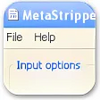A sleek and user-friendly Windows tool that allows you to add timestamps to your photos
A sleek and user-friendly Windows tool that allows you to add timestamps to your photos
Vote: (2 votes)
Program license: Trial version
Developer: avpsoft.com
Version: 2.9
Works under: Windows
Vote:
Program license
(2 votes)
Trial version
Developer
Version
avpsoft.com
2.9
Works under:
Windows
Pros
- Efficient batch processing of multiple photos
- Customizable time stamp options
- Additional text can be added to images
- Useful renaming and sorting features
- Intuitive interface suitable for all skill levels
Cons
- Free trial is limited, full version purchase necessary for continuous use
- May be less necessary for casual users with minimal organizational needs
Seamless Time-Stamping Solution for Your Digital Images
In the era of digital photography, one might notice the absence of a feature once taken for granted in traditional film cameras: the printed time stamp. This detail, often found nestled in the corner of printed photographs, has grown less common, yet it remains valuable for organizing and memorializing moments. TimeToPhoto steps in to address this by offering a straightforward way to bring back the convenience and nostalgia of having time stamps directly on your digital images.
Batch Processing for Efficient Time Stamping
TimeToPhoto distinguishes itself with a robust batch processing capability — it adds time stamps to a multitude of photos in one go. This feature is a time-saver for professionals and individuals with extensive photo collections. The program interfaces directly with metadata embedded in your photos, pulling exact timestamps from when each photo was taken. Users can queue up an entire folder of digital photos, and TimeToPhoto processes them with efficiency and precision.
Customization at Your Fingertips
The app does not stop at merely adding a timestamp. Users can fully customize the time stamp's appearance, including its size, location, and color, to match the aesthetic of the photo or to ensure visibility against diverse backgrounds. This customization extends to the inclusion of additional text on the image, whether for personalization or to serve specific documentation needs.
Renaming and Sorting for Simplified Photo Management
Beyond stamping, TimeToPhoto flexes its muscles in photo organization. The software is equipped with features to rename and sort pictures based on user-defined criteria. This function simplifies what could otherwise be a daunting task of manually organizing a large photo library. Whether it's by date, event, or custom tags, TimeToPhoto ensures that your digital collection is as orderly as it is accessible.
User Experience and Performance
The interface of TimeToPhoto is intuitive, allowing even those with basic computer skills to utilize its features without a steep learning curve. Despite the simplicity, it offers a depth of options that advanced users will appreciate for tailored results. The performance in batch processing is commendable; the application runs smoothly without undue strain on system resources, even when working through large batches of photos.
Conclusion
TimeToPhoto is a highly practical tool for those who value chronological documentation in their digital imagery. Its batch processing, customizable time stamps, and file organizing capabilities streamline what could be a labor-intensive process. While the free trial offers a glimpse into its potential, one must purchase the full version to unlock all its features over long-term use. Photographers, archivists, and hobbyists looking for an automated solution to add time stamps to their pictures will find TimeToPhoto to be a potent ally.
Pros
- Efficient batch processing of multiple photos
- Customizable time stamp options
- Additional text can be added to images
- Useful renaming and sorting features
- Intuitive interface suitable for all skill levels
Cons
- Free trial is limited, full version purchase necessary for continuous use
- May be less necessary for casual users with minimal organizational needs




